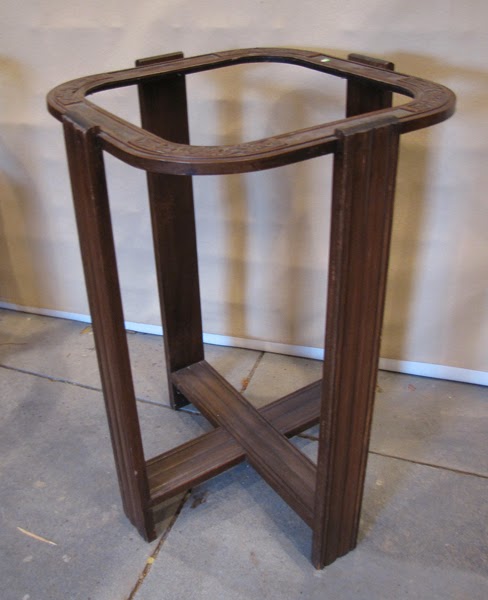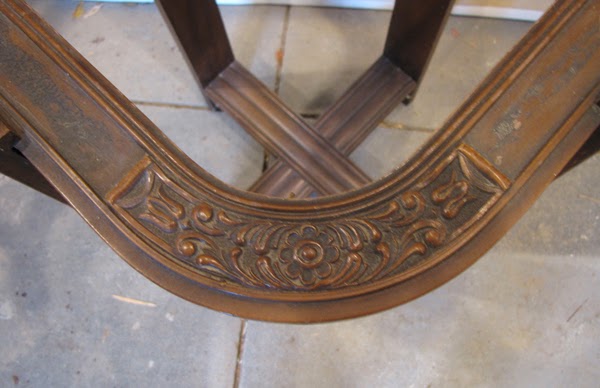 |
| China Cabinet Before |
 |
| China Cabinet After |
I'm always up to a challenge, and this job was no different. I received a
call from a client who had an antique China cabinet and matching buffet she wanted painted a dark navy blue. When I arrived at her house, she showed me the two pieces, which were lovely, but worn out and tired looking. A new coat of paint was just what the doctor ordered!
She told me she wanted a very dark, almost black navy, so I gave her the Sherwin-Williams color palette so she could choose the color. She selected #6244, Naval. It was the deepest navy blue they offered. I told her I agreed it was the right color. She preferred a "high gloss" finish, which I also thought would be a perfect choice that would complement the original brass hardware.
The process was a long, tedious one which involved a lot of preparation. We removed all the hardware, which would have to be polished. All drawers had to be removed since they'd be painted separately. There was a broken center bottom molding on the buffet, which had to be repaired and reinstalled. Other than minor repairs, the furniture was in great shape.
 |
| Buffet Before |
 |
| Buffer After |
The next step was sanding all the surfaces smooth. Jim took care of this while I painstakingly removed the molding, glass and filigree wood inside of the China cabinet's doors. The glass was held in place with 1/4" trim molding and attached with 5/8" nails. Luckily there weren't a lot of nails, but the ones I removed were difficult, as I didn't want to damage the molding. I carefully slid a thin metal putty knife between the interior of the door and the molding and gently pried the molding forward, revealing each nail. When I was certain I could grab the nail, I used my vice grips and tugged, until all nails were out, then carefully peeled the molding away from the edge. This took over an hour for just two doors. After I had removed the molding, I then marked each edge so that reassembly would be easy. (When working on this type of job, it's important to think ahead!)























